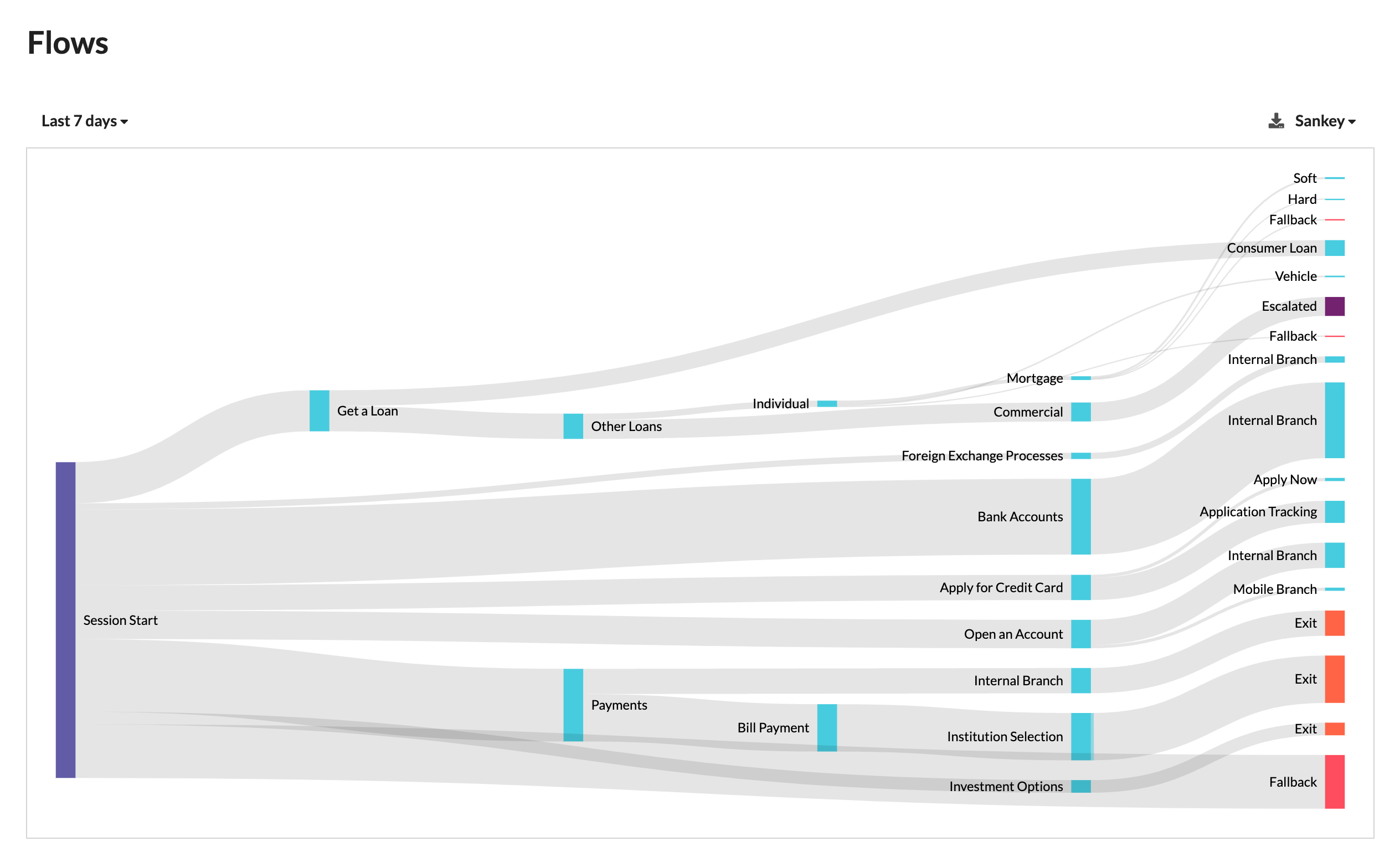Flows Sankey
A flows Sankey graph for a chatbot, where nodes represent intents, chatbot actions, composite events, events, fallback, exit, escalation, and built-in events, is a complex visual representation that illustrates the flow of interactions within a chatbot's conversation space. This specialized Sankey graph offers a comprehensive view of how users interact with the chatbot, how intents and actions are handled, and how various events and built-in events influence the chatbot's behavior.

Interpreting and Understanding the Flows Sankey Graph
Nodes
Intents: Represent the user's purpose or goal behind their input, such as "Book a Flight" or "Check Account Balance."
Chatbot Actions: Specific tasks or operations that the chatbot performs to fulfill user requests, like "Retrieve Flight Options" or "Process Payment."
Events/Composite Events: Triggers or occurrences within the conversation, including user expressions and contextual cues. Composite events combine multiple intents, events, and built-in events, like "Change Flight Date."
Fallback: Represents a state where the chatbot is unable to understand the user's intent and triggers a default response.
Exit (User Leaves Conversation): Indicates when the user decides to end the interaction without completion.
Escalation: Transition where the conversation is passed on to a human agent or higher support level.
Built-In Events: System-generated events like "Message Delivered" or "Message Read."
Flows
Represent the movement between nodes and illustrate the logical progression of the conversation.
Width of Flow Lines
Indicates the volume or frequency of transitions between nodes, with thicker lines indicating more transitions.
Colors and Labels
Differentiate between node types and aid in understanding the graph.
Interpreting Insights from the Flows Sankey Graph
Complex Interaction Patterns
Identify intricate patterns involving multiple intents, events, actions, and built-in events.
Fallback and Escalation Handling
Highlight points where the chatbot falls back or escalates the conversation, influenced by user inputs and system events.
Exit Points Analysis
Identify common reasons why users leave conversations to enhance engagement and task completion.
Event-Driven Behavior
Optimize event-based responses by understanding how events trigger actions or transitions.
User Interaction Insights
Gain insights into user engagement, common intents/actions, and emotional expressions.
Use Cases for Flows Sankey Graph Analysis
Chatbot Performance Optimization
Optimize understanding and responses based on complex flow patterns and event influences.
Exit Point Management
Identify reasons for user exits to enhance engagement and task completion rates.
Escalation Management
Fine-tune criteria and processes for conversation escalations to human agents.
User Experience Enhancement
Optimize user experience by addressing challenges and frustrations in conversation design.
Training and Development
Train chatbots to handle various scenarios effectively based on analysis insights.
Summary
In summary, a flows Sankey graph for a chatbot offers a comprehensive visual representation of complex interactions, aiding in understanding user engagement patterns, intents, actions, and event handling. Insights derived from the graph contribute to improvements in chatbot performance and user experience.